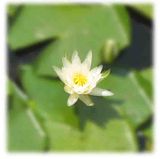When learning to meditate, boost your chances for success by adding sensory cues. These cues can be anything that signals your mind to settle into meditation mode. The following list is not all-inclusive; be inventive and find cues that work for you. Try as many as you like, in any combination you wish. Some may be too distracting, others may work perfectly.
See
- Ambiance is important. A dimly-lit area works well for meditation. You may want to use candles in lieu of lights. If it is too dark, you may be inclined to fall asleep. A brightly-lit room may interfere with your ability to concentrate.
- Keep your space free of clutter.If you are using an area of a room, such as your bedroom, make sure it is clean and inviting. Clutter distracts the mind from focusing, and can block energies from moving freely.
- Wear comfortable clothing. Do not wear anything constrictive that will interfere with your ability to breathe deeply. The ideal outfit would be loose-fitting, preferably cotton. You may want to set aside a special outfit. The ritual of "getting dressed" for meditation can serve as another cue to prepare yourself to begin.
- Find a comfortable position. Some sit in the lotus position on the floor. If you find this uncomfortable, you may want to use a yoga mat or other cushion. I use a 55-inch stability ball.
- Eliminate distractions. If you live in an apartment building or noisy area, you may want to try putting on some relaxing or natural music. If you are a beginner, you may also want to try using a guided meditation on CD. These are very easy to follow, and give you a more structured way to use your meditation time. Others just enjoy the silence.
- Ring a bell. In Buddhist meditation halls, they ring a bell to signal the beginning of meditation and to bring your mind back to focus during meditation. This can be extremely useful if you have a focal point you can't seem to lock onto.
- Pick a scent that won't give you a headache. Traditionally, people have burned incense during meditation. However, you can also try a scented candle or oil burner. Incense can be extremely potent and is not always recommended, especially in a very small space or an area with poor air circulation.
- Research properties of essential oils and choose properly. Some people that certain scents are associated with concepts such as peace, love, luck and spirituality. Sandalwood is always popular. You can dab a little oil on your pulse points or add a few drops to water and burn in an oil burner.
- Do not eat before meditation. Most meditation practicioner suggest meditating on an empty stomach. But if you are starving, eat lightly before meditating.
- Or, try an Eating Meditation. If you want to eat, you can practice mindfulness meditation while eating. Search the web for more information (the Oprah link above is a good place to start).








No comments:
Post a Comment